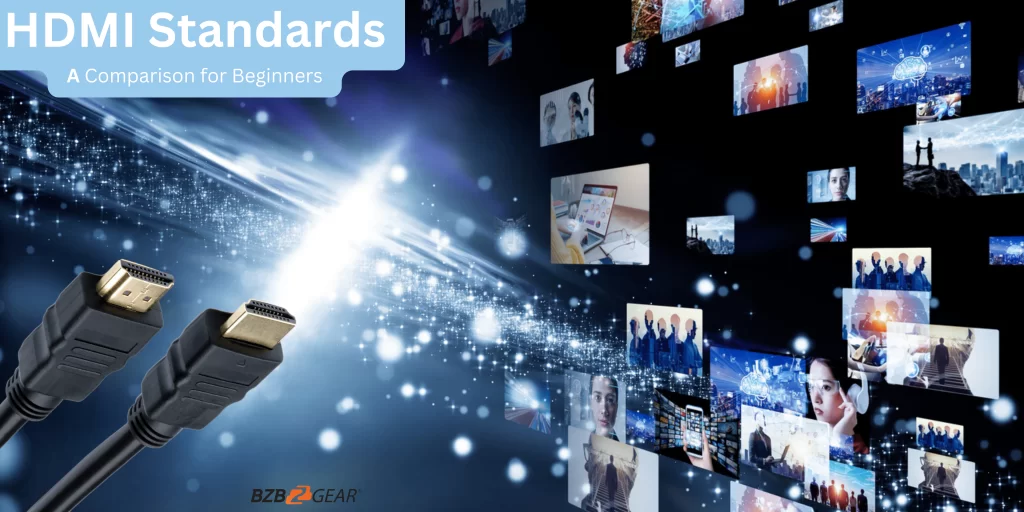HDMI Standards: An In-Depth Comparison For Beginners

HDMI (High-Definition Multimedia Interface) is a digital connection that transmits high-quality audio and video signals between devices. Since its introduction in 2002, HDMI has undergone several iterations, each with new features and capabilities. This article will provide an in-depth comparison of all the HDMI standards.
HDMI 1.0
The first version of HDMI, HDMI 1.0, was introduced in 2002. It had a maximum data rate of 4.9 Gbps and supported video resolutions up to 1080p. While it significantly improved over earlier analog connections, it lacked many features that would later become standard in HDMI.
HDMI 1.1
HDMI 1.1 was introduced in 2004 and added support for DVD audio. This was an essential feature for home theater enthusiasts who wanted to get the best possible audio quality from their DVD collections.
HDMI 1.2
In 2005, HDMI 1.2 was introduced, adding support for One Bit Audio, used in Super Audio CDs, and Consumer Electronic Control (CEC), which allowed for remote control of devices connected via HDMI.
HDMI 1.3
HDMI 1.3, introduced in 2006, was a significant step forward for HDMI. It added support for higher video resolutions such as 1440p and 1600p, as well as support for the xvYCC color space and Dolby TrueHD and DTS-HD Master Audio. HDMI 1.3 was also the first HDMI standard to support Deep Color, which allowed for more precise color representation.
HDMI 1.4
Introduced in 2009, HDMI 1.4 added support for 3D content, Ethernet connectivity, and an audio return channel (ARC), which allowed audio to be sent from a TV back to a sound system. HDMI 1.4 also supported higher video resolutions up to 4K at 30Hz.
HDMI 2.0
HDMI 2.0 was introduced in 2013 and was a significant upgrade over HDMI 1.4. It doubled the maximum bandwidth to 18 Gbps, allowing for higher video resolutions up to 4K at 60Hz. HDMI 2.0 also added support for HDR (high dynamic range) video, which improved color accuracy and contrast.
HDMI 2.0a
Introduced in 2015, HDMI 2.0a added support for HDR10 and Hybrid Log Gamma (HLG) HDR formats. This was an important feature for consumers who wanted to take advantage of the latest HDR-enabled TVs and displays.
HDMI 2.0b
HDMI 2.0b was introduced in 2016 and added support for HDR10+, Dynamic HDR, and eARC (enhanced Audio Return Channel). This was a significant upgrade over HDMI 2.0a and made it possible to take advantage of even more advanced HDR formats.
HDMI 2.1
The latest version of HDMI, HDMI 2.1, was introduced in 2017. It supports even higher bandwidths of up to 48 Gbps, allowing for resolutions up to 10K. HDMI 2.1 also introduces a new feature called Variable Refresh Rate (VRR), which reduces screen tearing and stuttering in video games. HDMI 2.1 also adds support for eARC and ALLM (Auto Low Latency Mode), making it the most versatile and capable HDMI standard available.
8.00 a.m. - 5.00 p.m. (PST)
10.00 a.m. - 3.00 p.m. (PST)
(by appointment only)



